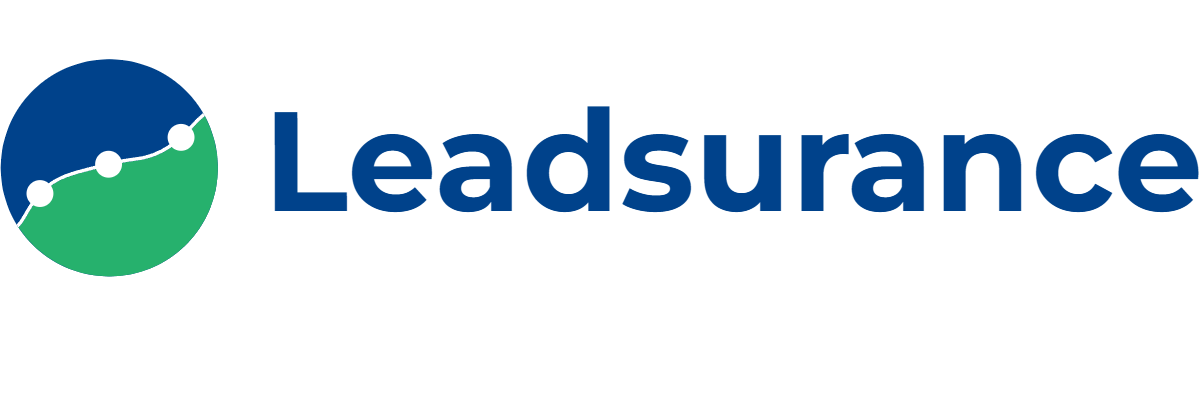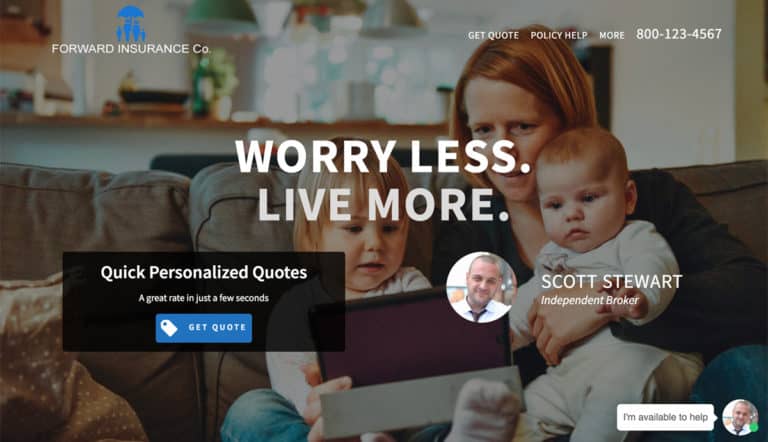Editor’s Note: In addition to this SEO guide, make sure to read 16 Steps to SEO for Insurance Agencies for more actionable steps to improve your insurance website SEO.
In August 2018, Google introduced an algorithm update that placed greater emphasis on expertise, authority and trust (E-A-T) when it comes to ranking content on its search platform.
This had a particular impact on sites that fall in a category commonly termed as “Your Money or Your Life” (YMYL) sites. Think retirement planning, health advice and – yes – insurance websites.
That made life a little harder for everyone, but for a new insurance website it’s even more important that you establish your authority and trustworthiness.
Fortunately, there are a few measures you can take that will boost your E-A-T credentials, and help you get your content in front of your customers faster.
In this guide, I’ll walk you through some of the most important steps you can take.
Set Up Google My Business
Associating your online business with a real-world presence is a simple but effective measure you can take to establish your authority and legitimacy early on.
It transforms you from being an unaccountable virtual entity, to one that has a legitimate point of accountability in the real world.
The two major search engines – Google and Bing – both provide the means to help you bridge this gap.
Google My Business
- Create a new Google Account
- Provide your business name and other details as you’re asked (be as thorough as possible).
- Verify your account. There are three ways of doing this:
- By Post Card – Google will mail a post card to you containing a unique verification number. Once you’ve received it in the mail, enter the code to complete verification.
- By Phone / Email – This won’t be presented to everyone, but if the options to verify by phone or email are offered, you can use them instead.
It’s pretty simple to get set up using these steps and the on-screen instructions, but if you need something a little more in-depth, have a look at Leadsurance’s Google My Business guide.
Bing Places For Business
Bing’s still very much the underdog in the world of search, but as the second largest search engine it’s worth signing up to their business portal.
- Sign in at the Bing Places For Business portal.
- Enter your business details.
- Click Create New Business.
- Fill out all the detail requested.
- Select Phone, Email or Text for verification.
- Enter the code you receive.
If you sign up for Google My Business first, Bing may recognize this and give you the option to register using that information. It will only do so if you’ve completed the GMB verification process first though.
Submit Your Business To Online Directories
Getting your business posted on relevant directories not only helps you attract organic leads, it’ll also provide your site with a link. (Learn more about earning backlinks)
These links transfer a little of the directory’s page authority to your website. As you gain more and more links, so your own authority will rise.
There are some obvious contenders here:
You don’t just have to limit your registrations to the big hitters though.
Instead, you can interrogate Google using some simple search terms that will help you discover more resource directory listings that are relevant to your industry.
Replace “your topic” with whatever search term you’re interested in getting listed for, and then simply throw it into Google.
inurl:links.html “your topic”
inurl:resources.html “your topic”
inurl:.com/resources intitle:”your topic”
Be imaginative with the terms you use here.
You might search for particular kinds of insurance, for example. Or you could look for insurance companies in your own town, city or state. Don’t forget to look for general local business directories as well.
Set up Social Media
Using social media effectively is beyond the scope of this article. It takes real effort and interaction to grow an audience – it’s about them, after all, not you!
With that said, there is some evidence to suggest that even a basic level of activity on these platforms provides a small ranking signal to Google. They’re so simple to set up there’s really no excuse not to, and every little helps when you’re launching a new site.
Here’s how to get the basics set up on the Big Three of social media.
- Log in to Facebook using your regular personal account.
- Click the + button next to your profile picture.
- Select ‘Page’
- Provide as much information as possible about your location, contact details, business overview and so on.
- Add profile and header images. Images should be 180 x 180 (Profile Pic), 820 x 462 (Cover Photo)
- Share our high-quality free life insurance posts
If you want to claim a custom URL, rather than the messy one provided by Facebook, you’ll need to get 50 Likes to your business page first. Time to call in some favors from friends and colleagues…
Yes, they send the majority of the world’s least exciting email notifications, but a LinkedIn business page provides another avenue for you to share your business expertise and grow your brand.
To set up a page for your company, follow these steps:
- Log in to your existing personal LinkedIn profile.
- Click the Work icon in the top right corner.
- Select ‘Create a Company Page’.
- Choose the type of Page you want to create.
- Add all of the profile and company information requested.
- Confirm you have the right to represent the company.
- Select ‘Create Page’.
The process for setting up a professional Twitter account is essentially the same as creating a personal one.
- Sign out of your Twitter account.
- Click the big blue Sign Up button at the top of the screen.
- Enter all of the details you’re asked for.
- Add profile and header images. Images should be 400 x 400 (Profile Pic), 1500 x 500 (Header Image)
If you’d like to be able to schedule your tweets, sign in via TweetDeck instead. There you’ll find options to set a future date on your posts, which is handy when you’re maintaining a basic profile in the early days
Plan A Content Strategy
It doesn’t matter whether you post twice a day or a few times a week, what really matters is quality and consistency when it comes to building authority with Google.
There are some excellent paid tools, such as Ahrefs, that will help you identify the volume and difficulty of targeting specific keywords.
It’s also perfectly possible to put together a starting content strategy using a free keyword tool like Ubersuggest.
All you have to do is enter your search term (for example, car insurance), and then go through the results.
The two key metrics you’ll need to pay attention to here are Volume and SEO Difficulty (SD). The first provides an estimate of how much traffic is generated by your keyword each month, while the second suggests the difficulty you’ll have ranking for that term.
In very simple terms, you’re looking for keywords that have a low SD but a high Volume. The more articles you can generate around a specific sub-topic, the more likely you are to attract traffic as well.
Depth beats breadth in the early days, so it’s better to double-down on one insurance category rather than spreading your content resourcing too thin. You’ll cover more ground but rank for less of it.
Again, Leadsurance has a more detailed guide to keyword research if you want to go a little deeper down this rabbit hole.
Publish Blog Posts On WordPress
WordPress is by far and away the world’s most popular online publishing platform, so it’s likely the way you’ll create your content.
If you’ve never used WordPress before, don’t panic! If you’ve used Word or OpenOffice in the past, you’ve already got 90% of the knowledge you need.
First, give your article a Title that provides a clear overview of the topic. For example: “The Best Black Friday Insurance Deals”
Next, copy your prepared text into a plain text editor like Notepad. Copy from there into the WordPress editor.
(I like to do this, as WordPress has an annoying habit of mangling formatting. It’s much easier to start from scratch in the platform’s editor.)
Save your post, then hit the Preview button in the top right-hand corner to see how your post looks on a basic level.
Next, it’s a case of formatting the piece to look just how you want it to. There are deeper guides that cover the nitty-gritty, but here are some basic formatting tips.
- If you have section headings in your post, select them, then change the drop-down box at the top from Paragraph to Heading 2. This will place something called <h2> tags around the section header, which signals the nature of the content section to Google.
- If there are sections within sections, give those sub-topics Header 3 / Header 4 formatting.
- Add a nice header image to your piece by scrolling down to the bottom of the right-hand WordPress stack where you’ll find a section called Featured Image. Click here and you’ll be able to upload the image you want to use into your WordPress Media Library.
There are some important details that are often overlooked but are essential.
- Before publishing, edit the URL so that it focuses on the key terms of the article. Strip out any fluff or words like “the” or “and”.
- Add 150-170 characters of “metadata” in the section at the bottom of the article. This is the snippet of text you see below a headline in Google search results and summarizes your article. Take some time here, as this is your opportunity to sell your article to readers and leave them feeling compelled to click through!
- If you have a related article that can be naturally linked to within your new piece, do so. This helps build your site’s structural authority with Google and gives your readers more opportunities to enjoy more of your content.
Make Your Links Work Harder For You
As you build links to your site from resource directories and so on, it’s likely that the majority of them will end up pointing directly to your homepage.
That’s great for building your broader authority, but presents a problem when it comes to delivering that authority to the commercial pages you really want to rank.
In very simple terms, the “link juice” you’ve worked so hard to acquire is diluted inefficiently across your entire domain.
To help you get more out of your link-building efforts, consider grouping your content into clear siloes. Treat each aspect of the business as a microsite in its own right.
Let’s say you’ve got 50 articles each on car insurance, home insurance, and business liability insurance.
For each one, create a meaty guide that acts as an archive of all your content on that particular sub-topic, easily accessible in one place.
In this article, link to each of your relevant articles, along with 50-100 words for each link that gives a clear overview of the value the reader will gain from clicking through.
Find a natural way of linking back from each article in the sub-topic to the archive post you’ve created.
As you complete these “ultimate guides”, position them on your homepage.
This does three things.
First of all, it provides your readers with a genuinely useful resource that they can use to discover and enjoy more of your content. That’s the essence of good SEO.
Secondly, it places your content in very close proximity to the landing point of the majority of your links. Typically the content you place on your homepage is the content you consider the most important, and Google understands this.
This is a way of putting all of your content in the firing line of your growing authority.
Finally, it gives you an opportunity to lead Google by the hand and demonstrate your authority on any given subject.
First, the crawler goes from your homepage to your ultimate guide.
From there it will follow your individual articles. As each of those articles links back to the ultimate guide, you take the crawler on a guided tour of your authority.
As a bonus, you’ll also have a useful article on a core topic that naturally grows in size as you publish new articles and add them to the archive. Eventually, it might even help you rank for the core term.
How does this look in practice though?
Take a look at this ultimate guide to making coffee at home that I put together for my food and drink website. Ignore the business sector, it really doesn’t matter. It could be coffee, car insurance or carpet-fitting!
New visitors to the site get the opportunity to explore more of the content that attracted them in the first place. It also demonstrates my credentials to claim authority on the topic.
It’s good for my visitors and great for Google. That’s a win-win.
Hammer Home Your Credentials
I talked at the start of this post about the particular importance of E-A-T when it comes to newly established sites that are likely to impact an individual’s health or finances.
As a new site in the insurance sector, it’s essential you capitalize on any real world authority you already have.
Here are some relatively simple options that you should include where they’re applicable:
About Page: Your About page is a crucial part of establishing your authority and legitimacy to Google. If you’re regulated by a trade body, state it clearly and link to them here as well.
Author Bios. If your authors belong to recognized professional organizations, state that and link to the organization in question. If that organization maintains a public directory of qualified members (many do), apply to have them link back to the author page – and your homepage if possible.
Homepage: If you’re a certified member of an organization, make that a clear part of your homepage. Many trade bodies will allow you to use their logo for this purpose but check first on a case by case basis.
Think Bigger With Backlinks
As a general rule of thumb, the easier a backlink is to obtain (such as from a directory) the less weight it will confer on your site.
They’re still important to get, but don’t underestimate the value of dreaming a little bigger.
The most valuable links originate from .edu .gov and .org domains. These are considered the jewels in the crown of any SEO strategy, and their impact on a new site, in particular, cannot be overstated.
The sheer difficulty of obtaining them is what makes them so powerful, but there are opportunities to be had here, even for new sites.
- If you sponsor a local school’s activities (for example, soccer club kits) ask the school to link back to your site in any posts about the team’s progress.
- If you’re involved with local government community initiatives, look for reasonable opportunities to have your business mentioned in blog posts, press releases, and so on.
The reason these links are so valuable is that they can’t – even in the Wild West of more questionable SEO – be bought. Not directly, at least.
In all cases, approach your personal contact with your request. They’ll be more inclined to reciprocate on the generosity you’ve shown first. Conversely, you’ll be lucky to hear back at all from a general web admin address.
Conclusion
It’s fair to say that no one ever found it easy to rank a new website on Google.
These tips will definitely help you get your new insurance website off to the best possible start though. Good luck!
Once you have finished these steps, make sure to also implement these 16 steps to SEO for insurance agents.
Are you working on your insurance website’s SEO? Feel free to ask us questions in the comments below.






